At the turn of the 20th century, St. Louis, Missouri, was the nation’s fourth largest city. Mansions lined the streets; the opulent train station, filled with stained glass and decorated tiles, was said to be the busiest in the country. The city was abuzz over the upcoming 1904 World’s Fair. Lewis Dozier caught the spirit of celebration. A prominent soda-cracker manufacturer (his company later would become Nabisco), Dozier built, in 1896, a 12,000-square-foot mansion in the florid, academic Beaux Arts style. Set in the fashionable Westmoreland Place neighborhood, the location of the house was ideal: just across from Forest Park, the site of the upcoming Fair.
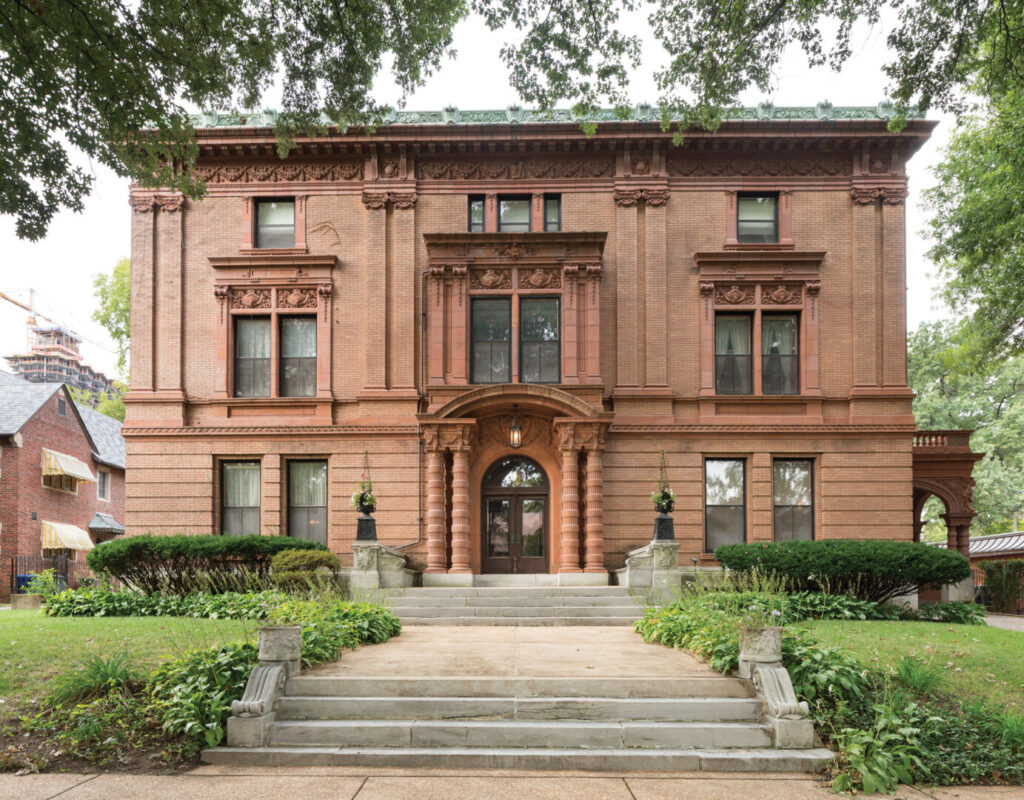
William Wright
Dozier, who was on the Fair’s Steering Committee, designed his home with the event in mind. The second and third floors were devoted to bedrooms (11 of them in all) to accommodate the anticipated stream of guests. The basement would be conceived as a medieval-style banquet hall and ballroom of 2,000 square feet, for entertaining. Indeed, among the many visitors who came to the mansion over the years was silent-movie star Rudolf Valentino. He had his own key.
When Ron and Joy Christensen saw the then-hundred-year-old mansion in 1996, it was love at first sight. The exterior is wildly impressive. Interiors are just as grand; a reception foyer is centered on a carved fireplace with an onyx surround, and a carved-walnut staircase leads past a musician’s gallery on the landing. Main rooms boast 12-foot-tall ceilings and open into one another for large gatherings.
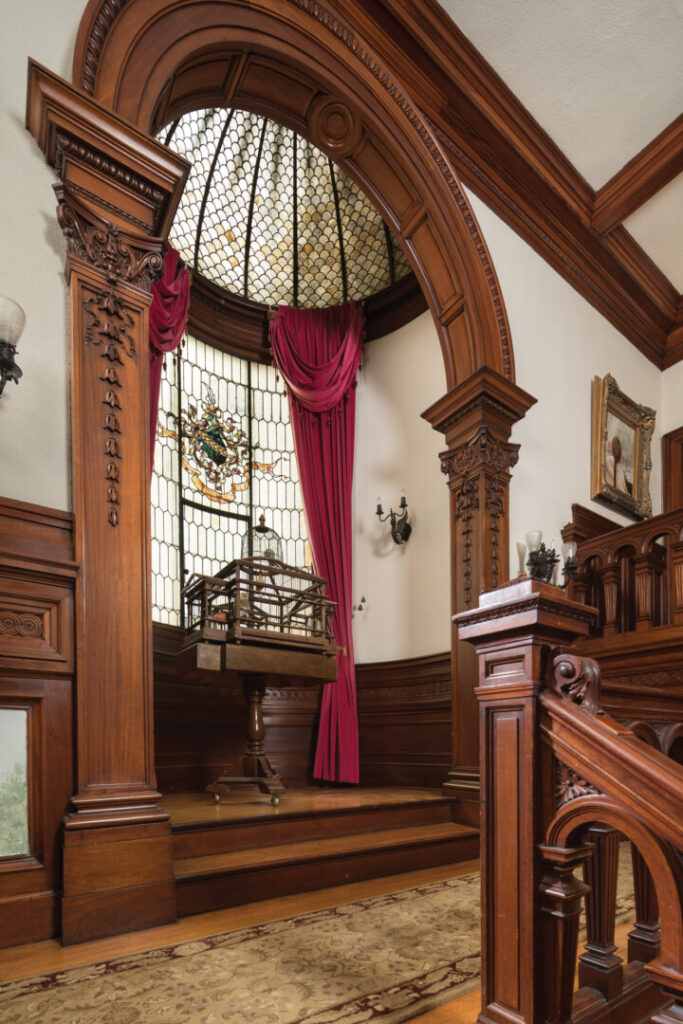
William Wright
It was Joy Christensen who sewed graceful lampshades of silk and lace for the Ladies’ Parlor, where today potted palms, blue-silk loveseats, and a récamier are true to what is seen in 1912 photos.
The clincher, Joy admits, was finding that the house has 10 bathrooms, each with a stained-glass window made to match decorative tiles. Here was a chance to own a piece of St. Louis history. Westmoreland Place, along with nearby Portland Place, is notably one of the last two private, 19th-century neighborhoods intact in the U.S.
Fortunately, previous owners had pre-served the house reasonably well. Carved woodwork already had been restored and refinished. Still, the previous owner had not been much of a decorator; the dining room was painted top to bottom in Chinese-restaurant red. Maintenance in the basement ballroom had been deferred to the point that plaster was falling off the walls, exposing the stone foundation; the maple floor had been replaced with Gypcrete, now failing, which would need removal, bucket by bucket, through the basement windows.
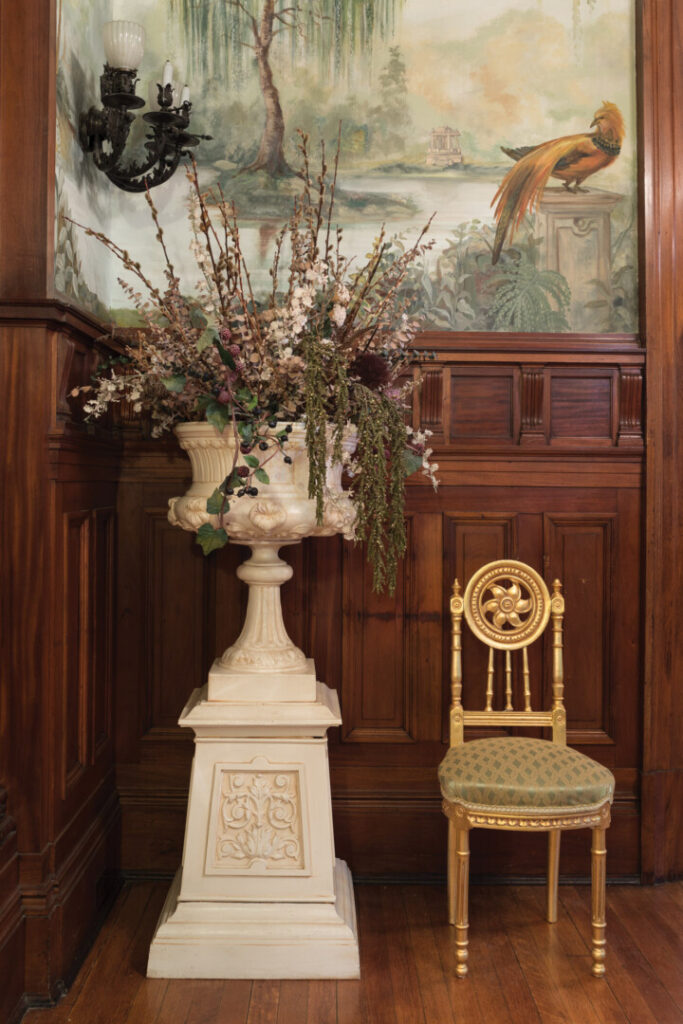
William Wright
Joy and Ron began with the necessary system upgrades. Attention next went to the kitchen, where new cabinets replicate originals in the butler’s pantry. An airy solarium was given even more light with larger windows adjoining the kitchen; the tin ceiling was brightened with white paint.
Parlors for ladies and gents: oldhouseonline.com/house-tours/historic-rosedale
Over a three-year period when the house was built, artisans had been brought from Italy to carve columns and capitals, wreaths and crests, egg-and-dart crown moulding, dentils and wainscoting. Wood species include walnut, exotic African mahogany, rare curly maple, cherry, three types of oak, and (now-extinct) curly pine. Joy Christensen, herself a talented artist, painted wall murals of pergolas and gardens, swallows and fountains.
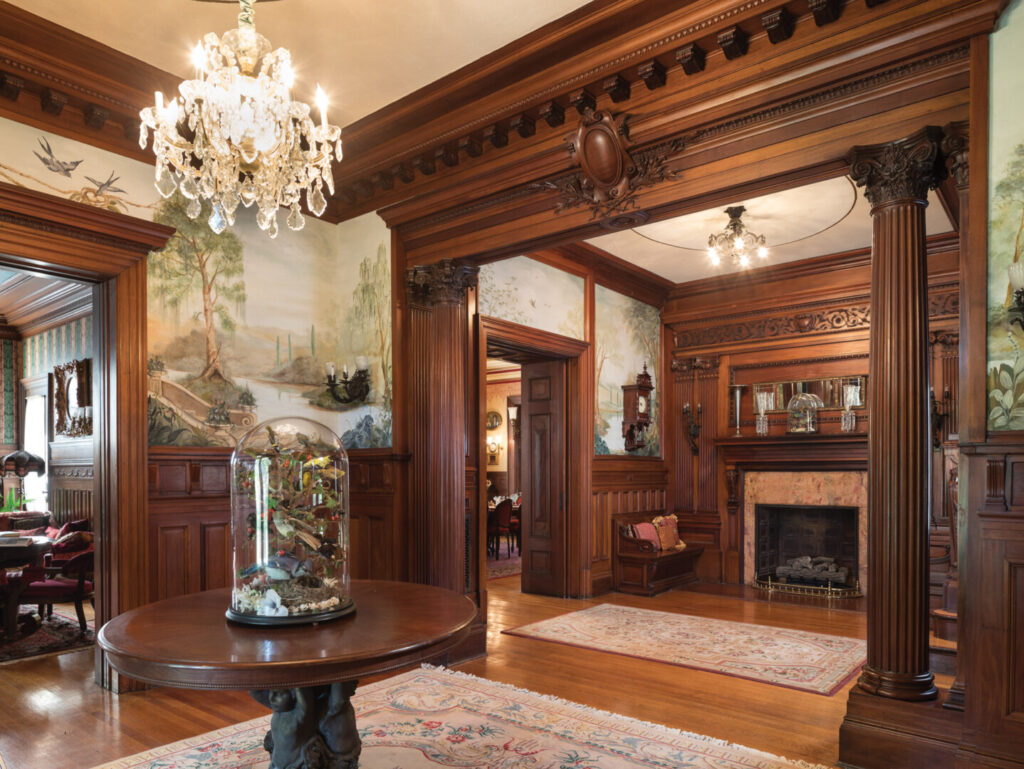
William Wright
Twin parlors opening from the reception hall have been restored as ladies’ and gentlemen’s parlors in the late-19th-century taste. On the west side of the house, the Ladies’ Parlor is a delicate, ivory and cream retreat for taking tea. On the east, the Gentlemen’s Library is rich in paneling.
Learn how to sew silk lampshades.
The dining room has been brought back to its former elegance, the coffered ceiling inset with panels of silver-gold foil paper, with grasscloth-covered walls painted peachy gold accented by a wine-red, stenciled border. The five-foot-tall chandelier had been removed but was stored in the basement. It had tarnished to black, but Joy, undaunted, scrubbed it with a toothbrush, then washed and restrung the crystals. The Banquet Hall required extensive restoration. Now the floor is concrete, scored to look like stone slabs.
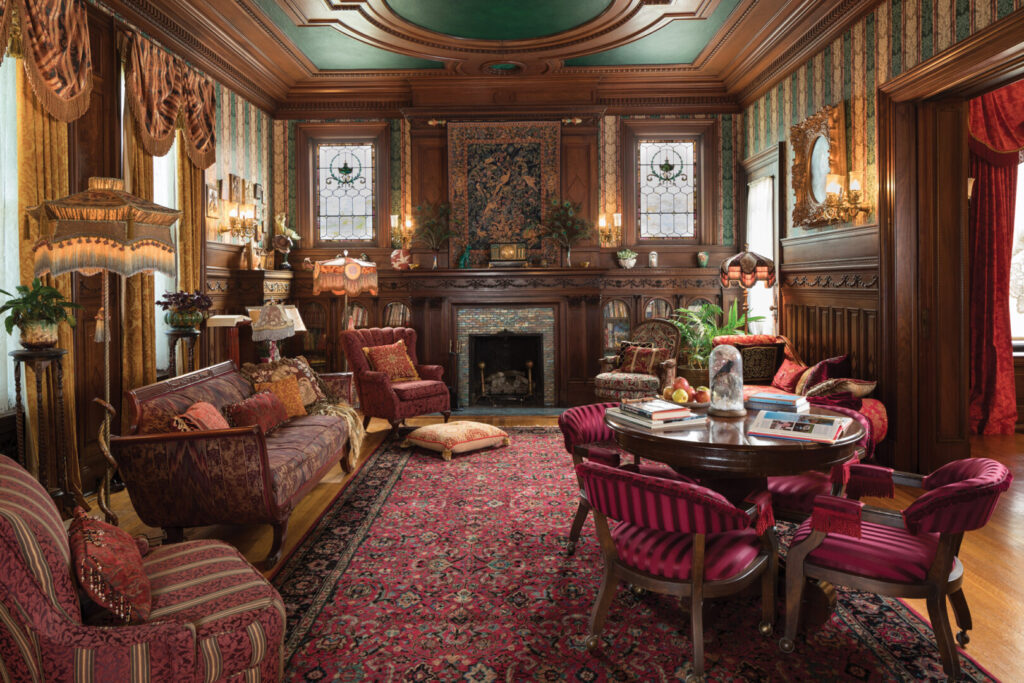
William Wright
Joy has begun restoration of yet another St. Louis landmark—a ca. 1874 Second Empire mansion with a pond and grotto.
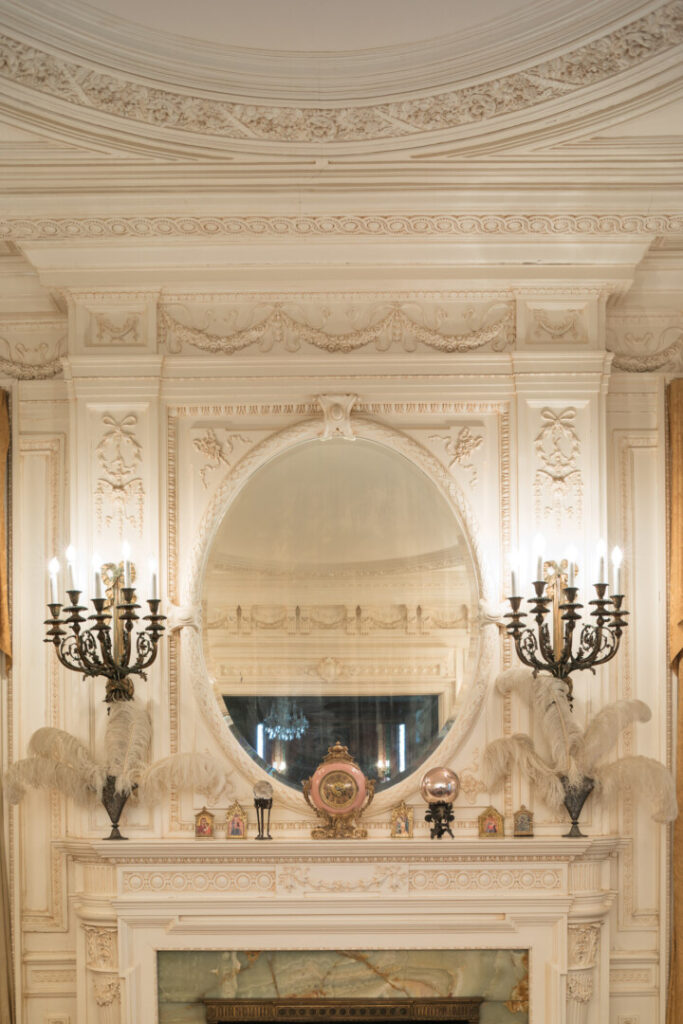
William Wright
Related Resources
fancy lampshades Plain Jane Shop plainjaneshop.com Custom handmade lampshades, from Victorian to 1920s designs
plaster decoration J.P. Weaverjpweaver.com European-inspired interior architectural mouldings & flexible ornaments Decorators Supply decoratorssupply.com Architectural mouldings in plaster, hardwood & compo; medallions, etc.
crystal chandeliers King’s Chandelier chandelier.com Crystal-trimmed chandeliers, candelabra & Victorian gaslight reproductions The Kings Bay thekingsbay.com Antique crystal chandeliers
metallic papers Faux Gilded Burlap ceiling, Arts & Crafts collection Bradbury & Bradbury bradbury.com • Albery Silver Cole & Son cole-and-son.com • Gilded Leaf Scalamandre scalamandre.com
grasscloth Wallpaper Direct wallpaperdirect.com Diverse wallcoverings, including historic designs and materials Phillip Jeffries phillipjeffries.com To the trade
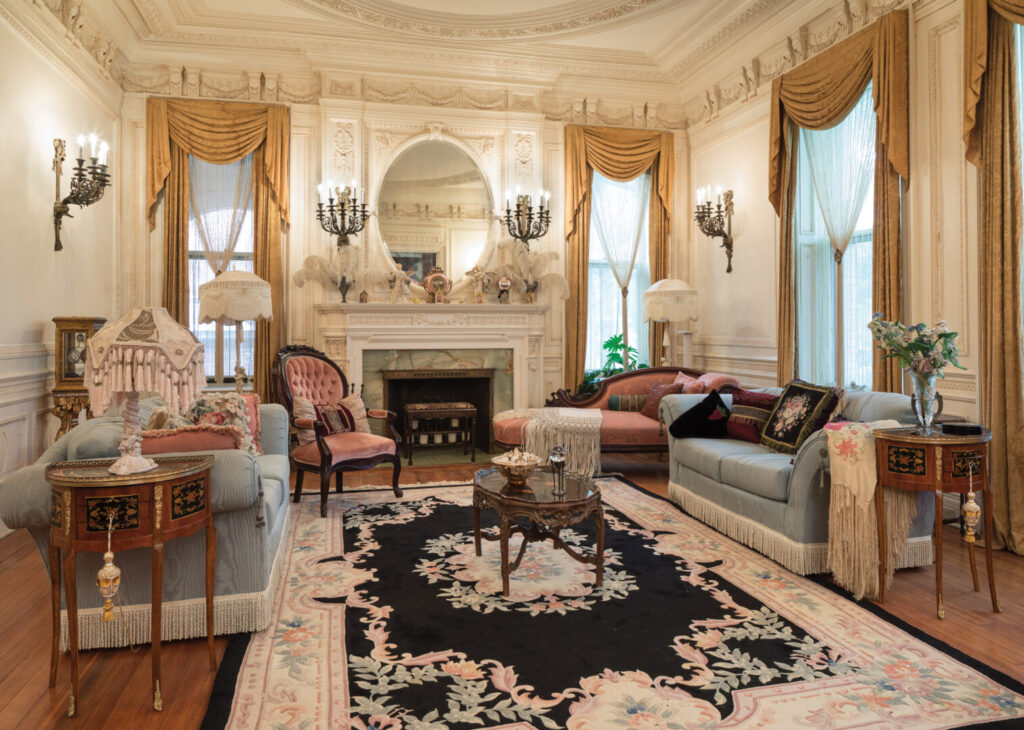
William Wright
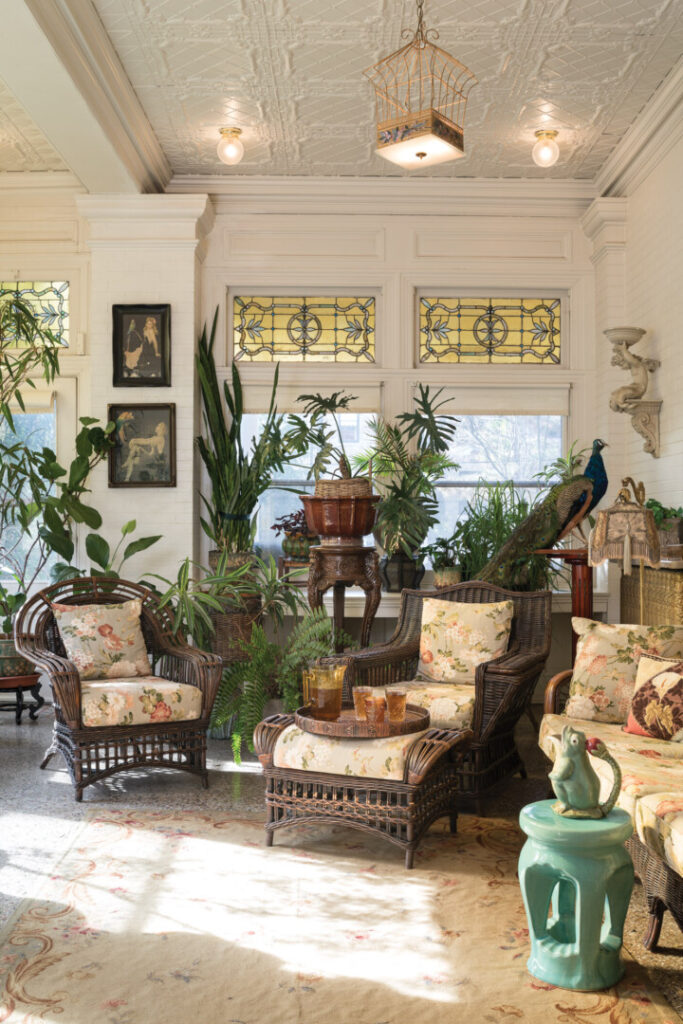
as a breakfast room.
William Wright
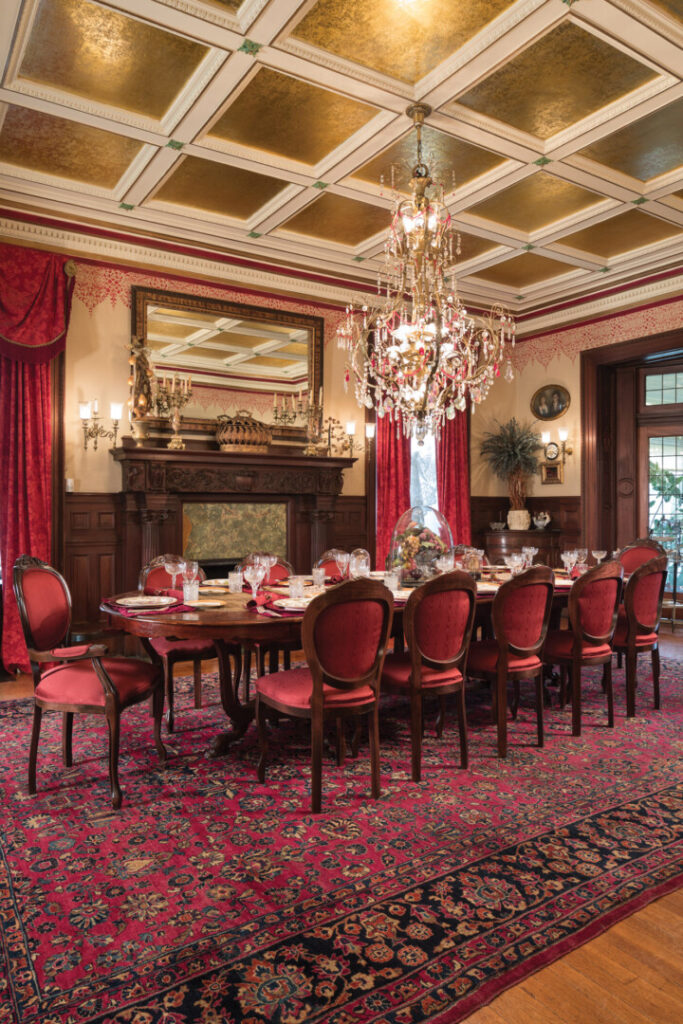
William Wright







